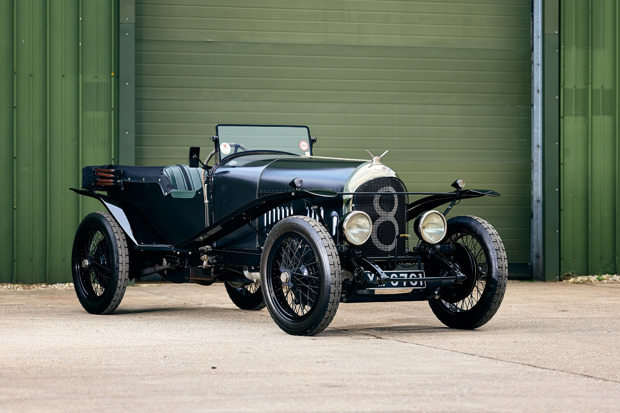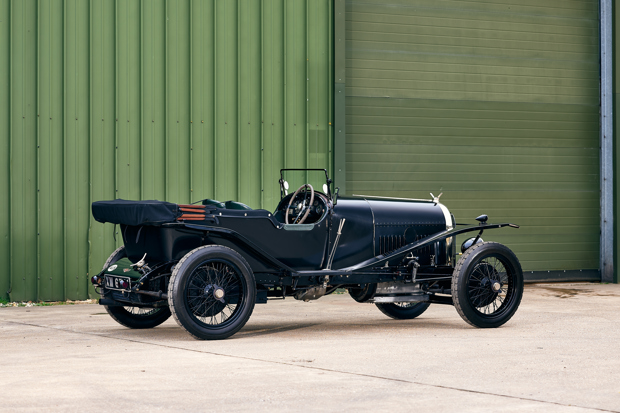First ever Bentley Le Mans car sells for £3m

The very first Bentley to compete in the Le Mans 24 Hours race has been purchased by a British enthusiast for £3 million.
The historic car, a Bentley 3 Litre, made history a century ago when it became the first British car and the first Bentley to participate in the grueling endurance race in its inaugural year.
As the Le Mans 24 Hours commemorates its centenary, this sale marks a significant milestone for both the iconic race and Bentley's rich heritage.
The car in question, Chassis 141, represents the birth of the Bentley legend and the establishment of the "Bentley Boys" tradition.
Their audacious exploits captured the imagination of the public, who envisioned them as living glamorous lives in Mayfair flats, sipping champagne in nightclubs, indulging in horse racing and hurtling around race tracks during weekends.
As company founder W.O. Bentley once quipped this perception wasn't entirely inaccurate for several members of the group.
Chassis 141, originally driven by Canadian World War I veteranband Bentley dealer John Duff, played a pivotal role in Bentley's early triumphs.

Duff entered the car in the Double 12 Hour Record at Brooklands, as 24-hour racing was prohibited to allow locals to rest. Impressively, Chassis 141 covered a distance of 2082 miles at an average speed of 86.79 mph, setting 38 international records.
Duff subsequently persuaded W.O. Bentley to prepare the reliable car for a new 24-hour race in a small town in France called Le Mans.
Although Bentley initially thought the idea was absurd, he relented and assigned factory test driver Frank Clement as Duff's co-driver. Together, they piloted the car to an impressive joint 4th place finish, setting a lap record of 66.69 mph despite having only rear brakes.
However, their race was not without its challenges, as they ran out of fuel due to stones puncturing the fuel tank. Buoyed by the achievements of Chassis 141, Bentley and the Bentley Boys returned to Le Mans the following year, ultimately securing victory.
From 1927 to 1930, Bentley dominated the Le Mans 24 Hours race, winning it four consecutive times - a feat that stands as one of the most remarkable streaks in the event's history.
The pioneering accomplishments of Chassis 141 convinced W.O. Bentley that his cars were not only capable of completing the demanding 24-hour race but also of emerging triumphant. W.O. himself acknowledged that he owed a great deal to John Duff and the pivotal role of Chassis 141.

The successes at Le Mans in 1923 and 1924 led to Bentley selling 700 vehicles within two years - a remarkable achievement for a young manufacturer that had only produced its first car in 1921.
Over time, Chassis 141 led a more ordinary existence. It served as a tow vehicle and underwent modifications by a local undertaker, transforming its rear bodywork into a shooting brake. In the 1940s, it was owned by a lady who used it to transport her St. Bernard dogs to various shows.
However, as time went on, the car gradually faded into obscurity, its significance forgotten. It wasn't until the early 1980s that the Bentley resurfaced.
Tom Wheatcroft, the owner of the Donington Car Museum, received an unexpected call from a remarkable 97-year-old woman offering him two old cars stored in her barn—a Bentley and a Voisin. Intrigued, Wheatcroft decided to acquire the vehicles, unaware of the extraordinary history behind the Bentley. For years, the car sat as a dormant project, awaiting its revival.
It wasn't until a motoring journalist stumbled upon the car and recognized its true identity as the long-lost first Bentley to compete in the Le Mans race that its historic significance came to light.
After the identification, negotiations ensued and a deal was finally struck with Australian collector Peter Briggs. The Bentley then underwent a thorough restoration process. The painstaking efforts aimed to restore the car to its former glory, ensuring that every detail aligned with its original specifications.
The transaction was facilitated by Kidston SA, a company established by Simon Kidston, the nephew of Glen Kidston, a renowned Bentley driver who clinched victory at the 1930 Le Mans 24 Hours.
If the price of my car rises above £40k after I've ordered it do I have to pay premium tax?


